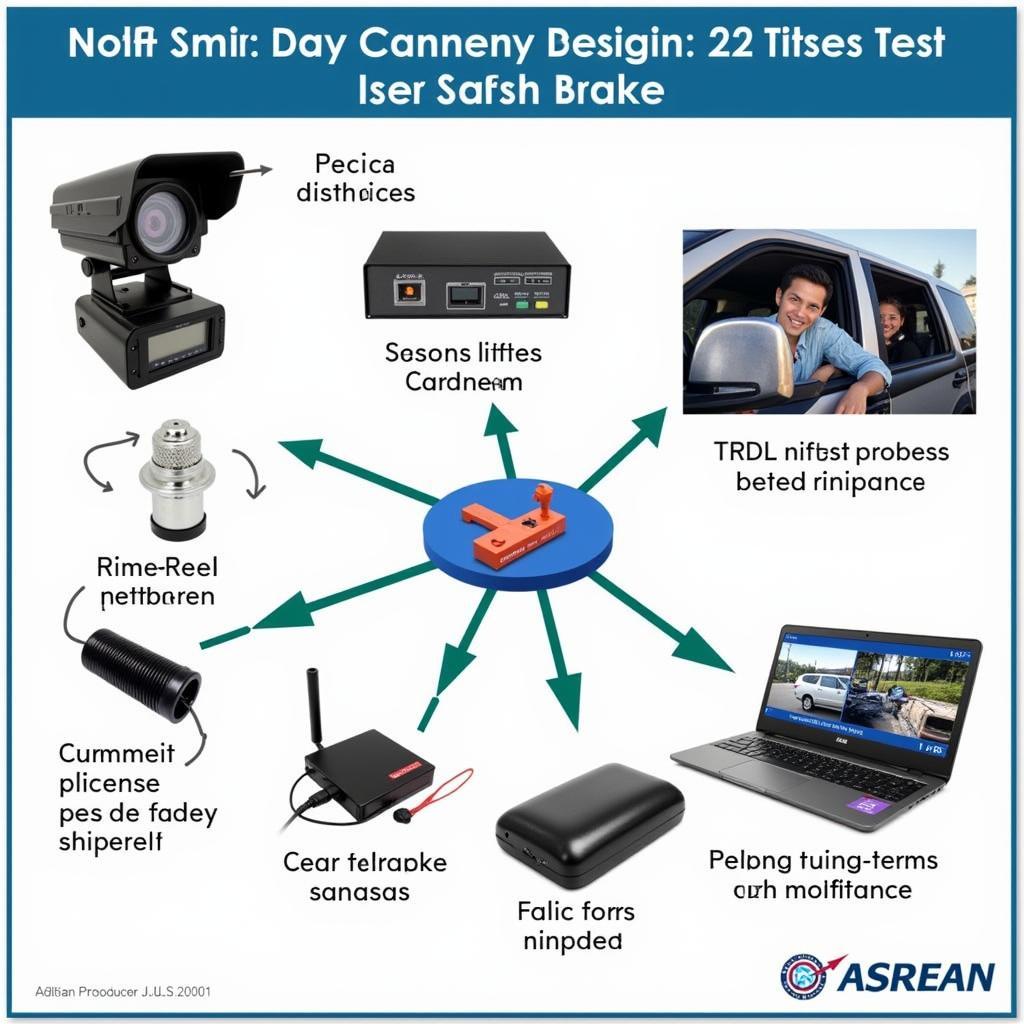The ASEAN Brakes 2019 Test marked a significant step in enhancing vehicle safety standards within the ASEAN region. But what exactly did this test entail, and why was it so important? This article dives deep into the ASEAN Brakes 2019 Test, exploring its procedures, implications, and long-term impact on road safety within the ASEAN community.
Understanding the ASEAN Brakes 2019 Test
Prior to 2019, ASEAN countries had varying standards for vehicle safety, including braking systems. This lack of uniformity posed safety risks and hindered the region’s goal of creating a harmonized automotive market. The ASEAN Brakes 2019 Test aimed to address this issue by introducing a standardized assessment for braking performance.
The test itself comprised a series of rigorous procedures designed to evaluate various aspects of a vehicle’s braking system, including:
- Effectiveness: Measuring stopping distances under different conditions, such as varying speeds and road surfaces.
- Stability: Analyzing the vehicle’s stability and control during emergency braking maneuvers.
- Fade Resistance: Evaluating the braking system’s ability to maintain performance under repeated heavy braking.
 Advanced Braking Test Equipment
Advanced Braking Test Equipment
The Significance of Standardized Braking Tests
The implementation of the ASEAN Brakes 2019 Test marked a pivotal moment for road safety in the region. By establishing a uniform standard, the test:
- Promotes Road Safety: Ensures that vehicles sold and driven within ASEAN meet a minimum safety benchmark, reducing the risk of accidents.
- Facilitates Trade: Harmonizes vehicle regulations, making it easier for manufacturers to produce and sell vehicles across ASEAN markets.
- Boosts Consumer Confidence: Provides consumers with assurance that vehicles purchased within ASEAN adhere to stringent safety standards.
Beyond 2019: The Future of Vehicle Safety in ASEAN
The ASEAN Brakes 2019 Test represented a crucial step towards a safer automotive landscape in Southeast Asia. However, it’s important to recognize that vehicle safety is an ongoing pursuit. ASEAN continues to evolve its safety standards, incorporating advancements in technology and addressing emerging challenges.
Future initiatives are expected to focus on:
- Advanced Safety Features: Integrating electronic stability control (ESC), autonomous emergency braking (AEB), and other advanced systems into the testing protocols.
- Pedestrian and Cyclist Safety: Expanding testing procedures to assess a vehicle’s safety performance in relation to vulnerable road users.
- Data-Driven Insights: Leveraging data from the tests to identify trends, improve vehicle design, and inform road safety policies.
 Safer Roads for a Brighter ASEAN Future
Safer Roads for a Brighter ASEAN Future
FAQs about ASEAN Brakes 2019 Test
1. Which vehicles were subjected to the ASEAN Brakes 2019 Test?
All new vehicle models intended for sale in the ASEAN market after the implementation date were required to undergo the ASEAN Brakes 2019 Test.
2. Did the test cover all types of vehicles?
Yes, the test encompassed various vehicle categories, including passenger cars, commercial vehicles, and motorcycles.
3. How does the ASEAN Brakes 2019 Test compare to international standards?
The ASEAN Brakes 2019 Test was designed to align with global best practices and standards, ensuring that vehicles in the region meet international safety benchmarks.
4. What happens if a vehicle fails to pass the test?
Vehicles that do not meet the criteria of the ASEAN Brakes 2019 Test are not granted approval for sale within the ASEAN market.
5. Where can I find more information about ASEAN vehicle safety regulations?
You can visit the official website of the ASEAN Automotive Safety Committee or contact your local vehicle regulatory authority.
Need Help? Contact Us!
For any inquiries or assistance related to Asean Media and its services, please don’t hesitate to reach out to our dedicated customer support team:
Phone: 0369020373
Email: [email protected]
Address: Thon Ngoc Lien, Hiep Hoa, Bac Giang, Vietnam
We’re available 24/7 to address your needs and provide the best possible support.


